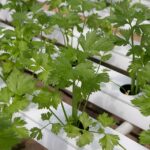I still remember the first time I brushed my fingers over the silvery leaves of a curry plant (Helichrysum italicum) at a garden center. A warm, spicy scent rose up—something like sage mixed with a touch of curry powder and sunbaked herbs. It instantly brought back memories of childhood meals and lazy summer evenings. I knew I had to take one home.
That little plant has since become one of my favorites in the garden—not only for its soft, aromatic foliage and sunny yellow blooms but also because it’s surprisingly easy to grow, especially from cuttings. If you’ve never tried propagating the curry plant before, let me walk you through it. It’s a rewarding, almost meditative process that turns a single stem into a whole new plant.
What Is the Curry Plant?
First, a quick clarification: the curry plant is not the same as the curry leaf tree (Murraya koenigii), which is commonly used in Indian cooking. The Helichrysum italicum, also known as the curry plant, is a Mediterranean herb known for its striking silver foliage and curry-like scent. While it’s not typically used as a cooking ingredient (except in very small quantities to flavor oils or stews), it’s a fantastic ornamental and aromatic addition to any herb garden.
It thrives in warm, sunny climates, and in my experience, it’s happiest in containers, especially if your winters get chilly.
Step 1: Selecting the Best Cuttings
The first step is choosing the right stems for propagation. I like to take cuttings in late spring or early summer when the plant is actively growing and full of energy. Look for healthy, non-flowering stems that are firm but still pliable. You want softwood cuttings—not too young and green, but not woody either.
Using a clean, sharp pair of scissors or pruners, snip off a 4- to 6-inch stem just below a node (that’s the little bump where leaves grow). I usually take a few extra cuttings just in case one or two don’t root—nature can be unpredictable.
Once you’ve got your cuttings, strip off the lower leaves, leaving only a few pairs at the top. This helps the plant focus on root development instead of maintaining too many leaves.
Step 2: Prepping and Rooting the Cuttings
Curry plants root best in a light, well-draining medium. I use a mix of equal parts potting soil and perlite or coarse sand—something airy and gritty that mimics their native Mediterranean conditions.
You can dip the bottom of the cutting in rooting hormone if you have it handy. I’ve had success both with and without it, but the hormone does give you a bit of an edge, especially if the weather is cooler.
Next, insert each cutting about an inch or so deep into the moistened mix. I usually poke a hole with a pencil first so I don’t damage the delicate stem when planting.
Place your pot or tray in a warm, bright spot—but out of direct sunlight. I like to cover mine loosely with a clear plastic bag or a humidity dome to keep moisture in while the roots are forming. Just be sure to open it daily for a bit of air circulation and to prevent mold.
Step 3: Patience, Warmth, and Water
Now comes the part that tests your patience: waiting. Rooting can take anywhere from two to four weeks. During this time, keep the soil lightly moist but not soggy. Too much water will rot the stems; too little and they’ll dry out before they get a chance to root.
I gently tug on the stems after a couple of weeks to see if there’s any resistance. If it holds firm, that means roots are starting to form. It’s always a little thrill when I check under the surface and see those first fine, white roots.
Once the roots are well developed—usually about an inch or two long—it’s time to transplant your baby curry plant into its own pot.
Step 4: Potting Up and Plant Care
I move my rooted cuttings into 4- to 6-inch pots filled with cactus or Mediterranean herb mix. These plants love dry, well-drained conditions, and heavy soils can quickly lead to root rot.
Curry plants are sun lovers. Give them at least six hours of full sun a day. Outdoors, they do best in hot, dry spots where other herbs might wilt. Indoors, place them near a bright window or supplement with a grow light if needed.
They don’t need much water—think of how lavender or rosemary likes to live. I water mine only when the top inch of soil feels dry to the touch. Once established, they can go even longer between waterings.
I fertilize lightly during the growing season with an organic, low-nitrogen fertilizer every 4–6 weeks. Too much fertilizer leads to leggy growth and less aromatic leaves.
Step 5: Trimming, Shaping, and Enjoying
Curry plants grow into lovely mounds of silvery foliage that smell heavenly on hot days. I like to pinch them back regularly to keep them bushy and compact. If you let them go too long, they can get a bit leggy or woody at the base.
You’ll also get small clusters of bright yellow flowers in summer. While they’re not fragrant like the leaves, they do add a cheerful splash of color. And the bees absolutely love them.
As for practical use—while I don’t cook with curry plant leaves directly, I sometimes toss a few sprigs into olive oil to infuse it with that spicy scent. Or I dry the leaves and tuck them into sachets for drawers and closets. They make the whole space smell warm and clean, like a Mediterranean breeze.
Final Thoughts
Growing the curry plant from cuttings has become one of those garden rituals I look forward to every year. There’s something deeply satisfying about multiplying a plant you love, especially when it rewards you with such beauty and fragrance.
If you’ve got a sunny windowsill or a warm balcony, give this herb a try. All you need is one cutting and a bit of care, and before long, you’ll have your own stash of curry-scented silver leaves waving gently in the breeze.
And every time you walk past and catch a whiff of that warm, spicy scent, you’ll remember—it all started with one little stem.


